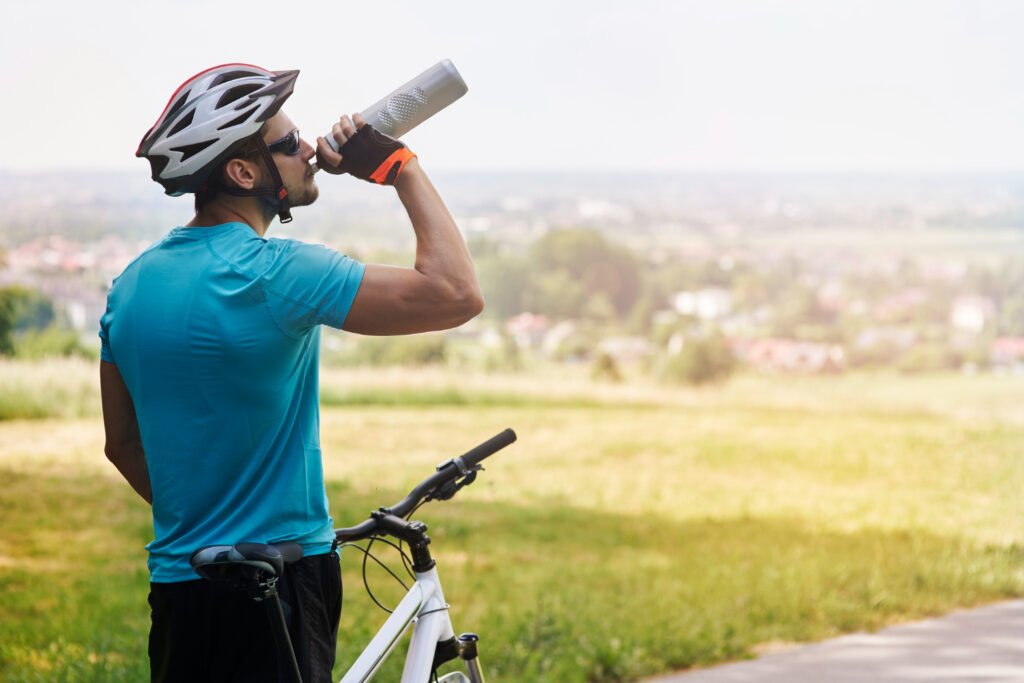The Best Fluffy Pancakes recipe you will fall in love with. Full of tips and tricks to help you make the best pancakes.
What to Eat During Long Rides: Real Food vs Gels
Food strategies and comparisons for on-the-bike fueling.

When it comes to fueling your ride, cyclists face a big question: should you eat real food or rely on energy gels? The answer isn’t always one or the other—it depends on the length, intensity, and goals of your cycling session for a better cycling nutrition.
In this guide, we break down the pros and cons of each fueling strategy, from the natural nutrients and satisfaction of real food to the fast-absorbing performance boost of engineered energy gels. Whether you’re tackling long base miles or pushing through an intense race effort, you’ll learn how to fuel smarter with both options.
The Fueling Foundation: Understanding Cycling Energy Needs
Long-distance cycling demands strategic nutrition planning to maintain performance and prevent the dreaded bonk. Rides exceeding 90 minutes require consistent carbohydrate intake to sustain muscle glycogen stores effectively. The golden rule involves consuming 30-60 grams of carbohydrates per hour during extended cycling sessions. Elite cyclists may increase this to 90 grams per hour for high-intensity efforts. Combining carbs with sodium and adequate hydration creates the perfect cycling nutrition trifecta.
Essential cycling fueling guidelines include:
- Carbohydrate targets: 30-60g per hour for most cycling endurance efforts
- Caloric needs: 200-300 calories hourly depending on body size and intensity
- Sodium requirements: 300-600mg per hour especially in hot cycling conditions
- Hydration goals: 500-750ml of fluid per hour during cycling activities
- Timing strategy: Start fueling early, before hunger or fatigue sets in
This foundation applies whether you choose real food or gels for your cycling nutrition approach.
Real Food Advantages: Natural Cycling Nutrition Benefits
Real food offers significant advantages for cycling nutrition, particularly during longer endurance rides. Natural options provide diverse nutrient profiles beyond simple carbohydrates for sustained cycling performance. The taste satisfaction factor becomes crucial during ultra-endurance cycling events lasting multiple hours. Real food typically includes beneficial fats and proteins that support longer-term energy release. Many cyclists find natural options gentler on the digestive system during extended efforts.
Top real food choices for cycling nutrition include:
- Bananas: 27g carbs, natural potassium, easy to carry during cycling adventures
- Dates: 30g carbs from 2-3 pieces, natural sugars for quick cycling energy
- Rice cakes with jam: 35g carbs, customizable flavors for cycling preferences
- Mini sandwiches: Balanced macros with peanut butter and honey combinations
- Boiled potatoes: Savory option with salt, breaks up sweet cycling monotony
- Homemade energy balls: Oats, honey, dried fruit for cycling recipe creativity
These options prevent flavor fatigue common with commercial cycling nutrition products exclusively.
Energy Gel Benefits: Engineered Cycling Performance Fuel
Energy gels represent scientific advancement in cycling nutrition, engineered specifically for athletic performance demands. These concentrated carbohydrate sources absorb rapidly, providing quick energy during intense cycling efforts. The portable nature makes gels ideal for competitive cycling situations requiring minimal handling time. Precise carbohydrate and electrolyte dosing allows accurate tracking of cycling nutrition intake. Advanced formulations combine multiple carb sources like maltodextrin and fructose for optimal absorption.
Strategic gel usage scenarios for cycling performance:
- Racing situations: Quick consumption without stopping during competitive cycling events
- High-intensity intervals: Fast absorption supports threshold and VO2 max cycling efforts
- Final hour fuel: Quick energy spike for cycling endurance event finishes
- Climbing sections: Easy one-handed consumption during steep cycling ascents
- Time trials: Minimal disruption to aerodynamic cycling positions
- Emergency fuel: Backup option when other cycling nutrition plans fail
Gels excel when cycling intensity demands rapid fuel delivery and minimal digestive load.
Practical Application: Combining Real Food and Gels Strategically
Smart cyclists combine both real food and gels strategically based on ride intensity and duration. Base training rides at moderate intensity suit real food cycling nutrition perfectly. Higher intensity efforts benefit from gel convenience and rapid absorption characteristics. Many successful cycling nutrition strategies start with real food, transitioning to gels later. This approach prevents flavor fatigue while optimizing performance for different cycling phases.
Optimal cycling nutrition timing strategies include:
- First two hours: Real food provides sustained energy and taste satisfaction
- Middle sections: Continue real food during moderate cycling intensity periods
- Final third: Switch to gels for quick energy and easier cycling consumption
- Climbing phases: Gels offer convenient fuel during technical cycling sections
- Sprint finishes: Quick gel energy supports final cycling performance pushes
- Recovery periods: Return to real food for broader cycling nutrition support
This flexible approach maximizes the benefits of both cycling nutrition categories effectively.
Hydration Integration: The Critical Cycling Performance Factor
Successful cycling nutrition requires perfect integration of fuel and fluid intake strategies. Both real food and gels demand adequate hydration for optimal absorption and performance. Gels particularly require water consumption to prevent gastric distress during cycling efforts. Real food typically provides some natural fluid content but still needs supplementation. Electrolyte balance becomes crucial during longer cycling sessions, especially in hot conditions.
Hydration best practices for cycling nutrition success:
- Gel protocol: Always consume 4-6 ounces water with each gel during cycling
- Real food pairing: Continue regular fluid intake even with moisture-rich cycling foods
- Electrolyte timing: Add sodium to drinks during cycling sessions exceeding two hours
- Pre-loading strategy: Begin hydration 2-3 hours before cycling activities start
- Weather adjustments: Increase fluid intake 20-30% during hot cycling conditions
- Recovery focus: Continue hydration immediately after cycling sessions end
Proper hydration transforms both real food and gels into effective cycling nutrition tools.
Summary
Both real food and energy gels play important roles in effective cycling nutrition. Here’s a quick breakdown:
- Real food offers natural carbs, fats, and proteins for sustained energy. Great choices include bananas, dates, rice cakes, PB&J sandwiches, and homemade energy balls—ideal for longer, lower-intensity rides and riders who prefer familiar flavors and better digestion.
- Energy gels provide fast-acting carbs in compact form. They’re perfect for races, climbs, time trials, or when you need fuel fast without stopping.
Best practice? Combine both:
- Use real food early in long rides for lasting fuel and flavor variety.
- Switch to gels during high-intensity sections or near the end when digestion becomes harder.
Don’t forget hydration:
- Always pair gels with water.
- Stay ahead on fluids and electrolytes, especially in hot or long rides.
For more fueling strategies and real-food-based cycling fuel ideas, check out our Cycling Nutrition Guide.





